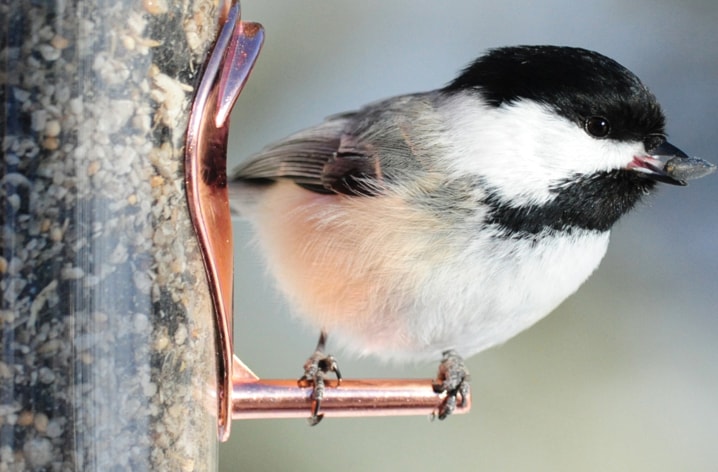Along with one third of the adult population of North America and, I assume, most readers of the Advocate, I maintain several bird feeding stations around our yard. Who doesn’t love watching backyard birds?
Attracting birds into our own yards and gardens provides us with the opportunity to observe nature first hand and to learn about the amazing avian creatures that share our outdoor living space.
The birds, by taking advantage of our largess, provide us with solace, enjoyment and even entertainment. Watching birds go about their daily business provides grounding in a world that is too often hectic and increasingly mired in the complexities of technology.
Perhaps most important of all, bird feeding stations provide the opportunity for children to become involved in nature observation. The sometimes comical antics of the black-capped chickadee at a feeder, for example, can open youthful eyes wide with joy and curiosity, leaving an ever-lasting impression.
While researching my first book, Winter Bird Feeding — An Alberta Guide, I learned about different types of bird food. Since then, extensive studies on bird seed use and preferences have been conducted.
The research confirms what most backyard bird feeding enthusiasts have long observed: sunflower seeds (striped and black oil) are the most popular feeder fare, followed by suet, nyger (a type of thistle) and unsalted nuts. There are a few other seeds that are eaten, especially white millet, canary grass seeds and canola.
Many different seed mixtures are now available and extensive research confirms that only those blends containing lots of sunflower seeds and/or sunflower chips, peanut bits and white millet should be offered. Don’t use mixes that contain cheap fillers and/or unpalatable seeds such red milo. Bread and other pastries, wheat and barley should also be avoided. Until recently, nyger seed was imported almost exclusively from India and Ethiopia. It is now being grown in Saskatchewan, so Canadian nyger should soon be widely available.
The last copies of Winter Bird Feeding have just been sold, so we hope to have a new edition published within a year. If you have tips or new/novel ideas about feeding backyard birds, please feel free to email them to me at mpearman@ellisbirdfarm.ca.
Myrna Pearman is the biologist and site services manager at Ellis Bird Farm. She can be reached at mpearman@ellisbirdfarm.ca.
